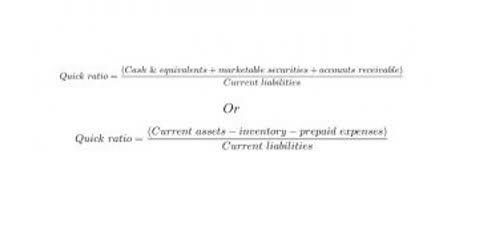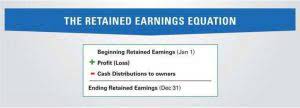
These assets can be cash or items that can be quickly converted into cash, such as temporary investments. Because it excludes inventories and items that cannot be quickly converted into cash, the quick ratio gives a more realistic picture of a company’s ability to repay current obligations. The current ratio is calculated by dividing a company’s current assets by its current liabilities.

Management of working capital

Understanding how much working capital you have on hand to pay bills as they come due is critical to the success of an organization. Focusing only on profit does not necessarily result in a healthy balance sheet. How do we record working capital in the financial statementse.g I borrowed 200,000.00 Short term long to pay salaries and other expenses. Put together, managers and investors can gain critical insights into a business’s short-term liquidity and operations. In this case, the retailer may draw on their revolver, tap other debt, or even be forced to liquidate assets.

Manage inventory purchases

On this page, we’ll break down everything you need to know — from understanding its key components to learning how to calculate it accurately. With the right insights, you’ll be ready to make more informed financial decisions and set your business up for smart, sustainable growth. A low ratio may be acceptable if a business has a large unused line of credit.
Working Capital Formula
- For example, a company with a preapproved line of credit that can be used when needed allows the company to operate with a smaller amount of working capital.
- The amount in this entry may be a percentage of sales or it might be based on an aging analysis of the accounts receivables (also referred to as a percentage of receivables).
- Crowdfunding offers particularly many advantages for private, non-profit, and creative projects – or as a supplement to public funding.
- Aging reports typically group invoices based on 0 to 30 days old, 31 to 60 days old, and so on.
- The balance here is between having enough inventory to meet customer needs and not miss out on any sales, versus having too much money tied up in inventory.
If you’ve built a solid relationship, they may be open to adjusting your payment schedule. Longer terms mean you can hold onto your cash for a bit longer – enough to handle pressing expenses or get new products off the ground. The working capital ratio is crucial for assessing a company’s short-term financial online bookkeeping health. It measures the firm’s ability to cover its current liabilities using its current assets. A high working capital ratio indicates better liquidity and financial stability, while a low ratio may signal potential cash flow issues. Current ratios over 1.00 indicate that a company’s current assets are greater than its current liabilities.
Calculation (formula)

A strong ratio suggests sound cash management and the ability to fund day-to-day operations without relying on long-term financing. It also aids in benchmarking performance over time or against industry peers, helping stakeholders evaluate financial stability and the risk of insolvency. Additionally, the ratio is easy to compute and interpret, making it a practical tool for both internal management and external https://www.bookstime.com/articles/how-to-choose-the-best-startup-cpa-service analysts. The current ratio is a liquidity measurement used to track how easily a company can meet its short-term debt obligations. Measurements of less than 1.0 indicate a company’s potential inability to pay what it owes in the short term.
- Equity is what’s left after subtracting liabilities from assets—the net value of your business.
- Hence, the company could have difficulty making its loan payments, paying its suppliers and employees, remitting employees’ payroll withholdings, etc.
- Many companies will not offer early payment discounts because of the high cost.
- The SCF will report the major cash inflows and cash outflows during the same period as the income statement.
- Current assets include cash, accounts receivable, inventory, and other assets that are expected to be converted into cash within a year.
- Hence, the company exhibits a negative working capital balance with a relatively limited need for short-term liquidity.
Tracking working capital ratio definition your working capital helps you understand when you might be at risk of not being able to cover your payments. Everything you need to know to calculate working capital is found on your balance sheet. So how do you know if your business has found the balance point between its debt and assets? One key balancing point that can sink or swim a business is assets versus debts. You’re constantly trying to keep things in check like revenue versus expenses or supply and demand. That’s because they offer you insight into whether your business is equipped to meet its short-term obligations, and whether the company has sufficient excess capital to invest in expansion.

No comment